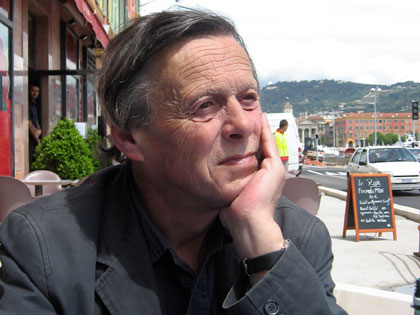THE LYRICS: 1956 to the Present. By Paul McCartney. Edited and Introduced by Paul Muldoon. Allen Lane, £75 sterling
From my adolescence onwards, Paul McCartney has been a constant musical companion in my day-to-day life – as he has been in the lives of so many others. And in the Lennon v McCartney debate that has raged down through the decades, I was always a fervent McCartneyite.
Mind you, in terms of their lyrics, Lennon often had the sardonic edge, but when it came to unforgettable melodies, seemingly conjured out of nowhere with effortless ease, there was no one, either in the Beatles or beyond, to touch McCartney. Indeed, in the same period, only Burt Bacharach managed such airy facility with melody.
Many of these inspired tunes were in the service of what he himself defiantly, if defensively, called silly love songs – that particular song itself providing the exhilarating high point of his 1976 Wings at the Speed of Sound album and written as a riposte to accusations by John Lennon and others that his songs were too soft-centred.
But you can judge for yourself by reading this sumptuous 910-page, two-volume book, which reproduces 154 of McCartney’s lyrics, with absorbing commentary on each of them from the man himself. This is culled from 24 interviews with him by Paul Muldoon over five years, and it’s a tribute to Muldoon’s unobtrusive methods and deft editing that the result comes across as very much in McCartney’s own words.
It’s not quite an autobiography – “the time has never been right” for that, McCartney says in the introduction. Yet while he hasn’t been keeping a diary, “what I do have is my songs – hundreds of them – which serves much the same purpose” And what apppealed to him about working with Muldoon was that he was a poet: “Like me, he is into words and understands the poetics of words”. Also, he adds: “We shared an Irish heritage”.
The songs are arranged in alphabetical rather than compositional order, which means that you miss the sense of a life and a talent gradually developing. And so the very first song he wrote, I Lost My Little girl – a 14-year-old’s lament for his 47-year-old mother Mary, a nurse and midwife who had just died from cancer – doesn’t feature until page 312.
Of this pubescent effort he remarks “You wouldn’t have to be Sigmund Freud to recognise that the song is a very direct response to the death of my mother”. And elsewhere, commenting on Lady Madonna, he says that his mother’s death was “something I never got over”.
But arresting observations abound throughout, as in remarks about his underrated 1971 single, Another Day, which details the humdrum life of a lonely office worker: “Think Eleanor Rigby meets Hitchcock’s Rear Window – like many writers, I really am a bit of a voyeur”.
This song occasioned a vicious response from Lennon in his musical diatribe, How Do You Sleep? (“The only thing you done was yesterday,/And since you’ve gone you’re just another day?), of which McCartney merely says “One of his little piss takes”. But there was love between the two men as well and that comes through strongly in these pages.
Of his one venture into political songwriting, the 1972 Give Ireland back to the Irish, written in the wake of Bloody Sunday, he says there were those “who perceived the song as a rallying cry for the IRA. It certainly wasn’t written to be one”. But, aside from being banned by the BBC, it was pretty terrible anyway.
Talking of Eleanor Rigby and of the line about “wearing the face that she keeps in a jar by the door”, he recalls that “my mum’s favourite cold cream was Nivea, and I love it to this day”. As for the song’s title, apparently the Eleanor came from Eleanor Bron, a trendy actress of the period, and Rigby from a shop front he spied when he was passing through Bristol.
Learning that Martha was the name he gave to a family sheepdog doesn’t make the song Martha My Dear anymore interesting, but he’s fascinating on the exact topography of Penny Lane, all of it lovingly remembered. And he feels that the scenario in She’s Leaving Home of a girl “meeting a man from the motor trade” could easily have shown up “in a Philip Larkin poem”.
McCartney has always had literary leanings and aspirations. “I’m fascinated by the couplet as a form in poetry”, he remarks at one point, adding that “John never had anything like my interest in literature.” That may sound like adolescent boasting, but he comes across throughout as far from boastful.
Rather, he’s both reflective and affectionate, whether about his father Jim, girlfriend Jane Asher and her parents or his late wife Linda – though not subsequent wife Heather Mills, who doesn’t merit one mention in the book’s 900-plus pages.
The book itself is a treasure trove of fascinating visual paraphernalia, including photographs from throughout his life, manuscripts of songs, scrawled notes, billboards for concert venues, all of it beautifully laid out and presented.
And if the asking price seems steep, no true lover of the Beatles will begrudge paying it. I was happy to note, too, that he thinks the sublime Here, There and Everywhere “my own favourite of all my songs” – though there are so many from which to choose.
